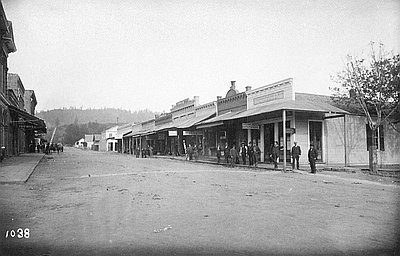Place Matters
Oregon’s history has been deeply affected by its geography and its natural resources. Timber in particular dominated the state’s economy, and the industry’s products were strewn across the land, from bridge trusses to railroad ties, from barns to mansions. Early Oregonians built structures in styles that were familiar to them and soon Oregonians adapted those styles to use local materials. Improved transportation and communication brought new materials and ideas, which were quickly integrated into Oregon’s built environment. The transportation and communication networks that a century ago broadened Oregonians’ access to imported building materials and imported ideas now operate on a global scale, and what happens in Oregon can seem mundane or parochial. Some regional distinctions remain, however, and deserve to be studied and encouraged.
Place matters and still makes a difference, especially if that place is the one where we live. Wood production is a sustainable resource, a desirable quality in building material that is not shared by steel or aluminum, and Oregon businesses increasingly promote the concept of sustainability. The idea of local action toward the ideal of sustainability in a global economy has led to the development and implementation of such concepts as “green” buildings, the recovery and reuse of polluted properties, a comprehensive land-use planning policy that incorporates consideration for history and historic preservation, stream rehabilitation and streamside restoration, beach and wetlands protection, organic farming and farmers’ markets. Even Oregon supermarket chains, furniture builders, and residential contractors are beginning to endorse and work toward sustainability ideals.
Oregon is still a state that can be characterized by its forests and its trees, by wood and wood products. Lumber mills and wood-frame houses still dot the landscape, if not so pervasively as they once did, despite having to share the land with shopping malls and freeways. If we look at the Oregon landscape and read the clues in its building and structures, study the historical photographs and maps and plans that depict what once was on the land, the Oregon story is more distinct and Oregon history more vivid.
© Richard H. Engeman, 2005. Updated by OHP staff, 2014.
Sections
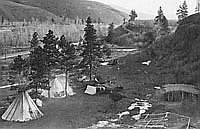
Native Ways and Explorers' Views before 1800
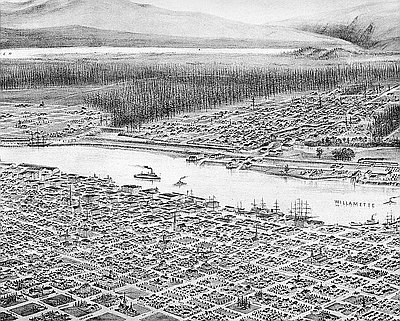
Euro-American Adaptation and Importation
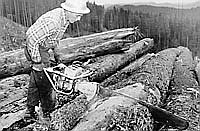
Sawn Lumber and Greek Temples, 1850-1870
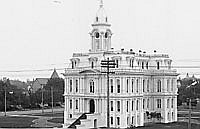
Architectural Fashions and Industrial Pragmatism, 1865-1900

Revival Styles and Highway Alignment, 1890-1940
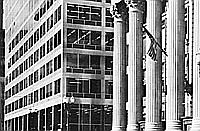
International, Northwest, and Cryptic Styles
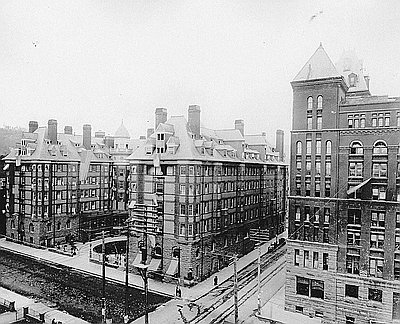
Glossary
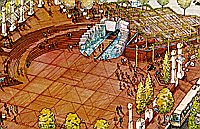
Built Environment Bibliography
Related Historical Records
Land Use in the 1995 Oregon Legislature
This pamphlet was written and published by Robert Liberty of 1000 Friends of Oregon. As the title indicates, the pamphlet tells the "story of land use in the …
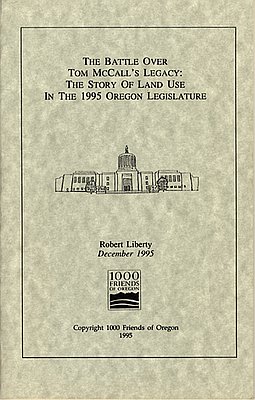
Fight for the Beaches
Oregon Journal photographer Herb Alden took this photograph of Peter Frost (right) and an unidentified friend at an Oct. 28, 1968 rally in Cannon Beach. More than 200 …
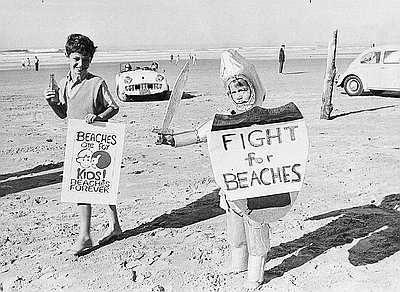
California Street, Jacksonville, c1890
This photograph looks west on Jacksonville’s main business street, California Street, about 1885. The photographer, Swiss-born Peter Britt, arrived in Jacksonville in 1852 to mine for gold, but …
